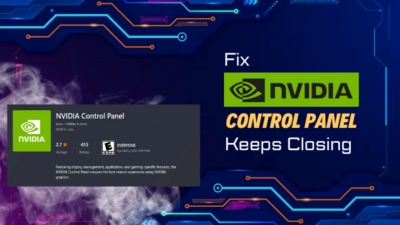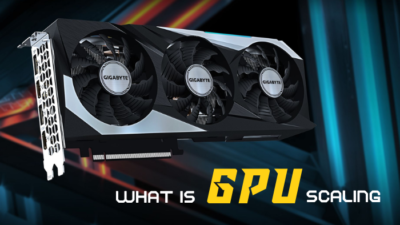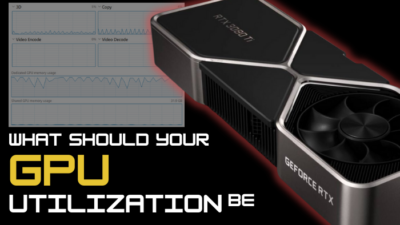If you are a gamer, you have already got the bitter experience of the screen tearing or stuttering once at a point. Of course, it is very annoying visually and also impacts your performance.
NVIDIA and AMD came forward with adaptive refresh technology— G-Sync & FreeSync and by enabling it, you can get rid of those screen tearing.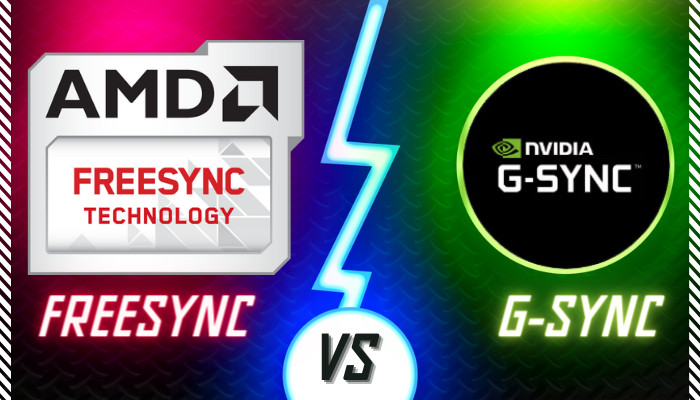
What do those sync techs differ from each other, and which should you consider when buying a new monitor?
In this article, you will learn about these adaptive technologies’ differences. Let’s jump in.
Why Do You Need Sync? Why FreeSync & G-Sync?
In PC monitors and some modern TVs, the ability to sync the refresh rate is an impressive feature that reduces visible tearing.
You need synchronization technology, as this feature guarantees a fluid gaming experience by eliminating screen tearing and stuttering. It is most effective in games where your rig encounters difficulty rendering the game at a higher frame rate.
Vertical synchronization, also known as V-Sync, is a display technology initially designed to help prevent screen tearing. With V-Sync, the GPU identifies the monitor’s refresh rates and adapts the image processing speeds accordingly.
However, this tech is helpful for a 60Hz monitor with low-end devices. With high-end GPUs, this Sync brings choppiness to image appearances due to frame time variation, also known as stuttering. Moreover, V-Sync adds noticeable input lag in competitive games.
That’s why manufacturers began to release high refresh rates monitors of 144Hz, 240Hz, and even 360Hz. These monitors ensure you can benefit from your high-end GPU’s peak performance and a smooth visual experience.
Manufacturers advertised these monitors with FreeSync (developed by AMD) and G-Sync (developed by NVIDIA) technology, which are very similar in function with the intent of reducing input lag and supporting a higher range of adaptive sync technology.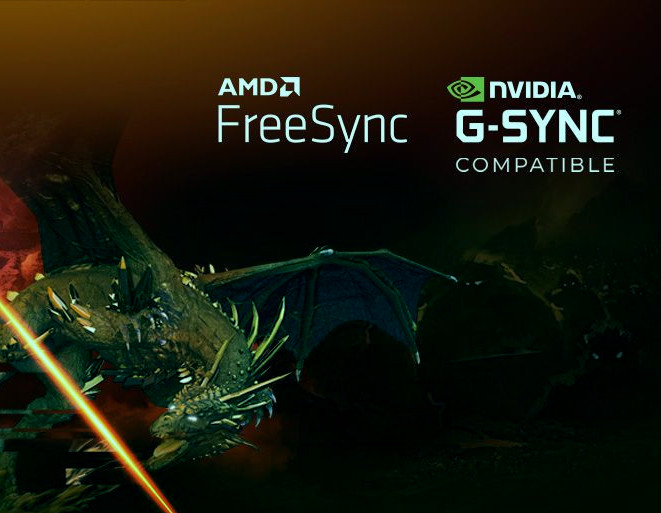
But there are some divergences that I will describe in this article. So keep reading.
G-Sync vs. FreeSync: The Difference to Fit a Variety of Needs
In the past, gamers were stuck with 60Hz and low-resolution monitors. So V-Sync was a temporary workaround. Today, we have 240Hz monitors & higher, and 4K monitors are also becoming mainstream.
Also, newer-gen Ada Lovelace and RDNA 3 graphics cards with upscaling features can potentially double framerates, even at 4K. So, gamers use G-Sync or FreeSync, to get max performance, minimal latency, and no tearing.
The graphics card sends a frame-ready signal to the sync-capable monitor that draws the new frame and waits for the next frame-ready signal, which eliminates visual tearing.
But which is the best sync option to use? Does one offer more significant benefits to the others? Can I have both FreeSync and G-Sync?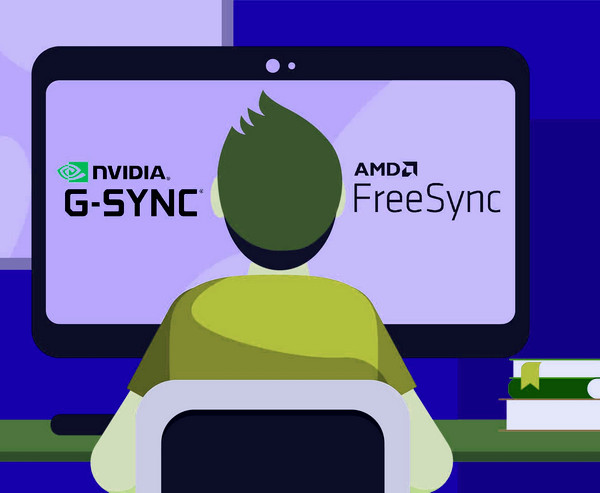
Here I will discuss some factors that will clarify your questions about AMD and NVIDIA’s sync tech.
1. Implementation
Both FreeSync and G-Sync features are more ideal than the traditional V-Sync methods for their effectiveness and implementation.
NVIDIA first introduced the NVIDIA G-SYNC module as a unique hardware solution to eliminate screen tearing. That particular module replaces standard display scalers and is exclusively compatible with NVIDIA graphics cards. That’s why G-Sync costs more than FreeSync.
On the other hand, later, AMD joined the party with FreeSync. But this time, the technology doesn’t require expensive proprietary hardware.
For this reason, manufacturers can easily incorporate FreeSync into existing designs without increasing costs. But as different manufacturers implement the tech differently, there may be inconsistency and limited frequency range due to the implementation variance.
| AMD FreeSync | NVIDIA G-Sync |
|---|---|
| Royalty-free. | NVIDIA proprietary. |
| Can implement on non-expensive hardware. | Require particular displays made by NVIDIA. |
| The sync range can vary. | The sync range can go as low as 30Hz. |
2. Connectivity
G-Sync monitors are NVIDIA proprietary and, depending on generation, only 1 or 2 input slots support. Monitors that come with HDMI 1.4 can be bandwidth constrained at higher refresh rates or resolutions.
In contrast, FreeSync monitors don’t have that connectivity limitation. Manufacturers can include a variety of input connections, even ports like DVI. But with DVI, you can’t use FreeSync.
So does FreeSync work with HDMI or DP?
Yes, FreeSync works with HDMI or DisplayPort cable. FreeSync over HDMI requires an AMD graphics card, though.
Besides connectivity, G-Sync has a very low input lag for using hardware-implemented technology focused on gaming.
FreeSync monitors are in the same boat as standard monitors. But it doesn’t mean they have an insanely high input lag. That’s why verifying G2G response time and input lag before investing in a gaming monitor is a good idea.
| AMD FreeSync | NVIDIA G-Sync |
|---|---|
| Can use multiple connectivity inputs. | Limited to 1 or 2 inputs. |
| Higher input delay than G-Sync. | Very low input lag. |
| Works over HDMI with AMD GPUs. | Works over only with DP ports. |
3. GPU Compatibility
Due to the NVIDIA proprietary and hardware-implemented adaptive sync tech, you can use G-Sync only with NVIDIA cards.
On the other hand, being royalty-free, FreeSync can be used with all AMD, some NVIDIA, and even Intel GPUs over DisplayPort. With AMD GPUs, you can also use HDMI to use FreeSync. In addition, AMD APUs also support this variable refresh tech.
That brings a question, can FreeSync be used with NVIDIA?
In January 2019, with GeForce driver 417.71, NVIDIA added support for DisplayPort Adaptive Sync. The driver allows NVIDIA GTX 10 and RTX 20- series beyond graphics cards to enable G-Sync on some specific FreeSync monitors via DP.
NVIDIA labeled these particular monitors as G-SYNC Compatible. This expands the option of using the G-Sync feature for NVIDIA users.
For integrating this compatibility, users can choose an affordable FreeSync monitor that results in smoother and more fluid visuals, enhancing the overall gaming or multimedia experience without expending a considerable amount of money on a native G-Sync monitor.
| GPU | AMD FreeSync | NVIDIA G-Sync |
|---|---|---|
| AMD R7 series & beyond | ✔ | ✖ |
| AMD RX series & beyond | ✔ | ✖ |
| AMD 6th gen APU and newer | ✔ | ✖ |
| NVIDIA GTX 650 Ti & beyond | ✖ | ✔ |
| NVIDIA GTX 960M & beyond | ✖ | ✔ |
| NVIDIA GTX 10 series & beyond | ✔ | ✔ |
4. Other Features
While G-Sync aims towards high-end monitors with the best possible experience, FreeSync tries to be simple and more affordable to users. Depending on the manufacturers, the FreeSync performance can vary, but it usually can’t match a G-Sync model’s premium feature because it is not hardware-implemented.
ULMB (Ultra Low Motion Blur) is a premium feature that significantly enhances motion clarity, which is not found on most FreeSync monitors. Another G-Sync monitor feature to reduce motion blur is Variable Overdrive.
The sad part is you can’t use this feature while FreeSync is turned on, as motion blur is designed for a specific refresh rate.
Regarding premium features, AMD and NVIDIA have premium versions of FreeSync and G-SYNC, respectively. The premium version costs a bit higher than the standard version for its specific functionality advantages. FreeSync monitors are also widely available for their affordable price than G-Sync monitors.
Here is a table at a glance of the factors between FreeSync and G-Sync:
| Factors | AMD FreeSync | NVIDIA G-Sync |
|---|---|---|
| Implementation | Varies for different manufacturers | Consistent |
| Connectivity | Multiple inputs | Limited to 1 or 2 |
| GPU Compatibility | AMD cards, APUs, and particular NVIDIA graphics cards | NVIDIA graphics cards |
| Input Lag | Varies on the model & usually higher than G-Sync | Little |
| Availability | Great | Decent |
| Price | Affordable like standard monitors | Expensive |
| Versions | FreeSync, FreeSync Premium, and FreeSync Premium Pro | G-Sync Ultimate |
If you want to buy a monitor or GPU, you may be contemplating the differences between premium syncing technology and deciding which is best for your setup. Let’s break it down and reveal the choice for you.
High Dynamic Range (HDR) is the next big thing in PC gaming, as the viewing experience improves with better color, brightness, and contrast ratio when enabled.
So, what is the role of HDR in FreeSync Premium Pro and G-sync Ultimate?
Both games and monitors need to support the HDR feature to gain the advantage of HDR. FreeSync Premium Pro, also known as FreeSync 2 and G-sync Ultimate, supports HDR features. Also, both premium versions support LFC (Low Framerate Compensation).
FreeSync 2 tried to bring the technology up to the G-sync level. But G-Sync Ultimate is more reliable and expensive. Moreover, the feature is dedicated to the hardware rather than being software-enabled like FreeSync.
G-Sync Ultimate is designed with an NVIDIA processor, able to deliver over 1000 nits of brightness, vibrant colors, and a perfect level of contrast.
In a word, both the G-Sync and FreeSync are worth it for the best gaming visual experience possible.
FAQs
Should I cap FPS to use G-Sync?
G-Sync works within the monitor refresh rate & synchronizes the GPU frames with it. So, you must limit the frame rates to the monitor Hz to gain the G-Sync benefits. If the monitor refresh rate is 240Hz and you get more than 300+ FPS, G-Sync won’t be able to stop all the screen tearing.
Does FreeSync improve fps?
AMD FreeSync is a sync tech that eliminates screen tearing and frame stuttering when enabled with compatible hardware. The sync feature will work when the FPS is within the monitor refresh rate. So, you must cap the FPS to match the frame rates with the monitor Hz. Hence, FreeSync doesn’t improve FPS.
When shouldn’t I use FreeSync or G-Sync?
For competitive first-person shooting games like Rainbow Six Siege, CS: GO, Valorant, etc., it is recommended not to use the sync feature. Though the sync will smooth gameplay, it costs input latency, and lower Input lag is crucial in FPS games. The sync tech requires to cap FPS, which greatly adds latency.
Final Thought
With G-Sync and FreeSync, you can remove screen tears and stutter that no gamer wants. The sync techs adjust the monitor’s refresh rate to that of the GPU to avoid screen tearing.
AMD FreeSync monitors are considerably cheaper and widely available than native G-Sync monitors. They also work with different graphics cards with variations in input lag, which I discussed in this article. I am sure this article helped you to understand the differences between the FreeSync & G-Sync features.

